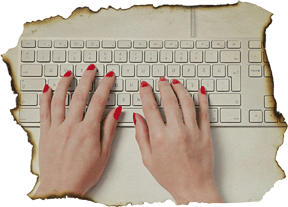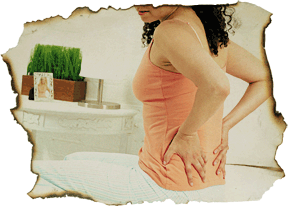Back pain, neck pain, knee pain, foot pain – wherever the pain is, it’s a pretty powerful motivator. In fact, depending on the severity of the pain, you may be willing to do just about anything to get rid of it. That’s why so many people rush to the medicine cabinet and pop a few pills at the first sign of pain. Here’s a much better idea: Try these simple exercises that can actually help reduce pain caused by common overuse conditions.
Keep in mind that jumping right into exercises and stretches in a quest for relief from pain is not always the best course of action. The difficult part is learning what exercises you can do on your own that are safe and effective. Often, the simplest of movements can have a profound positive impact on alleviating your pain. Here are some of the more common pain syndromes and injuries, along with simple exercises to help reduce symptoms. These exercises may be done on your own or in conjunction with recommendations from your health care provider, but either way, you should consult with them first to make sure you’re pursuing the right strategy to get rid of your pain (and get rid of it for good).
 Carpal Tunnel
Carpal Tunnel
Why It Hurts: You wake up at night with numbness and tingling in your hands. Sleeping through the night is almost an impossible task. You may be suffering from carpal tunnel syndrome, a condition in which nerves from your neck traveling into your hand can become compressed in the wrist. The goal of therapy is to open up space in the wrist to take compression off of the nerves, alleviating symptoms. One of the primary causes of carpal tunnel is constant flexion (forward bending) of the wrist, as one would do typing on a keyboard.
What You Can Do: Here is a very effective exercise you can do on a daily basis for quick relief. Extend (straighten) your arm out in front of your body with your palm facing up. Straighten your fingers, keeping them close together. Bend your wrist backward and try to point your fingers toward the floor, and with the opposite hand press down on the palm side of your fingers to bend (extend) your wrist slightly further. Hold this stretch for 2 seconds, return the wrist to a straight position, and then repeat the entire movement for 10 repetitions. Exhale when pressing down. Apply gentle pressure on the pressing-down movement with approximately 2 pounds of pressure. This exercise will stretch the soft tissue of the forearm and wrist, helping to alleviate tension around delicate nerves.
 Tennis Elbow
Tennis Elbow
Why It Hurts: If you experience sharp pain on the outside of your elbow when trying to twist open a jar or grasping something with your hand, it may be tendonitis of the forearm muscles. This injury became known as tennis elbow because players would get elbow pain after hitting repetitive backswings in tennis. The constant impact trauma and overuse inflamed the tendons and caused chronic pain. A common culprit of elbow pain is muscle knots known as trigger points in the forearm, which can refer pain to the elbow.
What You Can Do: Here is a simple technique to help reduce trigger point inflammation. You will need a tennis ball to perform this self-massage technique. Stand sideways against a wall. Bend your arm 90 degrees at the elbow with the thumb facing up. Place the tennis ball between the top of the forearm and the wall, with the opposite hand press against the inside of your forearm, putting additional pressure into the ball. Move the forearm back and forth in a circular motion on the tennis ball, searching for tender spots. Spend between 30-60 seconds on each tender spot until the pain begins to fade; then search for other tender areas. Do this massage three to five times per day.
Why It Hurts: Are you feeling clicking and popping in your knee? Perhaps walking up and down stairs has become a challenge and taking those after-dinner walks is more and more difficult.
Knee pain can be a tricky condition because proper motion depends on the functioning of the hips and ankles. When you have pain in the knee, it can sometimes be difficult to do direct exercises for rehabilitation. That’s why you are going to work on moving the ankle to help the knee. Why? If the ankle does not move well enough, your body overuses the knee every time you take a step and it can become painful.
What You Can Do: Stand on the edge of a step with the balls of your feet. Make sure you have something to hold on to for balance. Keep a slight bend in your knees and let your heels drift downward towards the floor, so your toes are higher than your heels. Sink the heels downward as far as you can and hold for 5 seconds. You can progress to one foot at a time for increased intensity. Return to the starting position and repeat 10 times. For even more intensity, hold a dumbbell in front of your body. The additional weight increases motion in the ankle joint. (Note: There should be no “pinching” sensation in your ankle.)
Shoulder Pain
Why It Hurts: You love playing a game of catch with your kids in the backyard. Every weekend it’s a ritual to toss the baseball around and spend quality time. But lately, you can’t throw without getting shoulder pain every time you raise your arm. What could it be? When it comes to shoulder pain, there are many different areas of the body can be involved, so an evaluation by a health care professional is encouraged. Every shoulder problem is related to how well you move in your mid-back. There is an intricate relationship between the motion of your thoracic spine (mid-back) and your shoulder.
What You Can Do: Here is a very effective exercise you can do at home or in conjunction with your rehabilitation program to speed up your recovery. Increase rotational movement in your mid-back to help your shoulder move better. Lie on your left side on the floor with knees tucked high in a fetal position at waist level. Use a pillow for head support to relax muscles in the neck. Makes sure your shoulders, knee, and ankles are stacked on top of each other to prevent twisting in the lower back. Extend (straighten) both arms out in front of your body along the floor, with palms facing each other. Take your right arm and rotate (turn) it behind your body, trying to touch the back of your hand to the floor behind you. Turn your eyes and your head to look behind in the direction you are turning. Do not let your knees separate, and keep your left arm on the floor. Return to the starting position. Exhale on every reach backward. Do 10 repetitions and repeat on the other side. You should feel this in the upper back and chest region.
 Lower Back Pain
Lower Back Pain
Why It Hurts: The thought of getting out of bed in the morning makes you cringe. The very act of sitting up sends an intense ache into your lower back. You think, ‘How can I even work today? ‘How am I even going to brush my teeth?’ Lower back pain affects 80 percent of Americans and even with rehabilitation, it is still very susceptible to re-injury.
What You Can Do: One of the most powerful ways to help your back is to help your hip joint move more. When you lose motion in your hip, it forces the back muscle to work more in an effort to compensate. So in reality, your back muscles are simply overworking and they need to rest. Lie on your back with your knees bent and feet flat on the floor. Keep yours arms by your side with palms up. Move both feet 6 inches away from the body and make sure they remain flat. Your feet will no longer be in line with your knees. It will look like a wide-stance position. Keeping feet flat on the floor, bring both knees inward, trying to touch them together (knock-kneed position). Hold for 2 seconds, separate knees, and then repeat 10 times. Move the feet further apart when it gets easy to perform. You should feel this in the outside of the hips.
Heel and Foot Pain
Why It Hurts: You love to run. The feel of the open road invigorates your body and your mind. Then out of nowhere, you start to feel pain in your heel and the bottom of your foot.
Every step is painful and the very thought of running makes you grimace. You may be suffering from a condition known as plantar fasciitis, inflammation in the soft tissue of the sole of the foot. This can be a very difficult injury to recover from and may take several months for a full recovery.
What You Can Do: Here is an exercise that may help you get back to the road even faster. Massage the bottom of each foot on a daily basis for 5 minutes with a golf ball. Yes, a golf ball. Remove your shoes and start in a seated position with the golf ball under your foot. Press your foot into the golf ball and begin circular, side-to-side, and up-and -down motions from the heel to the ball of the foot. This may be uncomfortable and tender, but it is necessary in order to break up scar tissue in the soft tissue of the foot. Progressions include doing the exercise in a standing position and applying more body-weight to the golf ball. You can also massage the back of your calf to help release tightness in the muscle that attaches to your heel.
The most important point to remember is that no exercise should make your pain worse. Soreness and discomfort are acceptable and expected; however, increased pain and dysfunction is not. It takes time for an injury to properly heal. Do not try to rush your body beyond what it is capable of handling. The great thing about these exercises is that they can be done even after you feel better to help reduce the chances of experiencing recurring pain.
There is no real cure for aches, pains and injuries; only management. So be proactive and take back control of your body and your pain by doing these simple movements on a regular basis. Talk to your doctor for more information about these and other exercises to help keep your pain in check.
By Perry Nickelston, DC